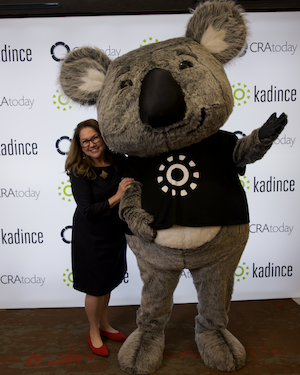
Subscribe to Kadince's Blog

Leveraging the Special Purpose Credit Program (SPCP) Framework to Serve Minority Populations

49 million American adults don’t have conventional credit scores. That’s 19% of the population.
This includes 28 million people with no credit at all, and 21 million with not enough credit to generate a conventional score. In addition, another 57 million Americans have scores that would likely stop them from receiving loans and other financial services. That’s way too many!
Most of these unbanked Americans belong to economically disadvantaged or minority groups, such as Black or Hispanic.
These numbers are based on a 2022 report from financial consulting firm Oliver Wyman, and the numbers have likely increased since then. Clearly, something needs to be done.
Banks, credit unions, and other lenders have resources and programs that allow them to help. One such program is the Special Purpose Credit Program (SPCP) allowable under the Equal Credit Opportunity Act (ECOA) and Regulation B.
SPCPs are programs run by banks and credit unions that help increase access to credit for economically disadvantaged groups in their communities. By offering credit to individuals who, under standard criteria, might not receive credit (or would receive it on less favorable terms), financial institutions can give a leg up to those who need it most. And who doesn’t want to help out the underdog?
For example, an SPCP might focus on offering credit to specific classes based on race, national origin, or sex. But they should always carefully navigate anti-discrimination laws and never discriminate against anyone. Seriously, don’t discriminate!
Running an SPCP program can be critical to addressing the needs of minority populations in your community and ensuring equal access to financial services. Everyone deserves access to the services your institution offers, and SPCPs can help make that happen.
Let’s take a deeper look at the benefits of an SPCP, what it takes to create one, and how it might affect your CRA program (if applicable). But first, who should be involved in creating an SPCP and how might it affect other departments throughout your institution?
➤➤➤ Want a deeper dive into the Special Purpose Credit Program? Check out this Kadince webinar recording presented by Paola Diaz, Sr. Community Affairs Specialist at the FDIC. Plus, you’ll earn 1.25 CFMP and CRCM credits from the ABA.
Who’s involved?
Running a Special Purpose Credit Program isn’t a one-person job. No thank you! Planning, creating, implementing, and tracking your program will take a team, and this team will likely expand beyond your department’s borders. Who’s involved and what their roles are will depend on your institution’s size, structure, and specific goals.
Here are some of the key roles and departments typically involved in managing and operating an SPCP:
Compliance Department: Ensures that the program follows all relevant laws and regulations, including the Equal Credit Opportunity Act (ECOA) and Regulation B. This may also involve the legal department. You wouldn’t want to release anything that isn’t compliant, now would you?
Credit Policy and Risk Management: Develops and oversees the credit policies and risk assessment models that govern the SPCP, ensuring that they align with the bank's overall risk appetite and regulatory requirements. They also document any adjustments made to the SPCP.
Community Reinvestment Act (CRA) Officer or Department: For banks subject to the CRA, this role or department might play a significant part in developing and running your SPCPs, as well as tracking the impact of your program. Don’t worry, we’ll discuss the CRA department’s role later in the article.
Marketing: Responsible for promoting the SPCP, working closely with community organizations, and ensuring that your target audience is aware of the program and its benefits. It’s marketing’s job to make sure people actually know about the program!
Loan Origination and Servicing: Handles the practical aspects of processing applications, underwriting, closing, and servicing loans under the SPCP. This includes ensuring that staff are trained on the specifics of the program and its objectives.
Senior Management and Board of Directors: Ultimately, the decision to implement an SPCP, along with its objectives, parameters, and oversight, will require approval and support from your institution’s senior management and Board of Directors. SPCPs don’t go through a government approval process, so getting plan approval from your senior leadership is important.
No bank or credit union will structure its SPCP management the same, so find what works best for your institution and go from there. Keep the specific overall goal in mind, and find the people throughout your institution who are best suited to that goal. When you have the right team, the rest will follow.
The benefits of implementing an SPCP
Implementing a Special Purpose Credit Program (SPCP) offers numerous benefits for financial institutions and the communities you serve. Here are some of the key advantages:
Expand access to credit
Historically marginalized communities deserve access to credit (obviously). When individuals have access to credit, they’re more likely to have a high quality of life and to accomplish the financial goals they’ve set. Your bank or credit union can be an essential part of this process. By bridging the gap between those who qualify for credit and those who don’t, you can provide vital opportunities for home ownership, education, and business development to those previously marginalized.
Support community development
Helping the community is an important part of running a bank or credit union. SPCPs are a great way to help your community and promote development. By targeting underserved communities, you can have a bigger impact than many other community initiatives (looking at you, poorly planned sponsorships that don’t clearly lead back to the bank). SPCPs can lead to economic growth, revitalization, improved housing, more vibrant local businesses, and overall enhanced community welfare.
Enhance institutional reputation
It may sound a bit like bragging, but you want community members to know when you help their community. When you implement an SPCP, you demonstrate a commitment to fairness, equity, and social responsibility. Your customers/members will know you care about the community, and this can lead to better loyalty, new customers/members, and an overall brand reputation boost.
Provide regulatory benefits
Engaging in SPCPs can help your bank meet its obligations under the Community Reinvestment Act (CRA) and other regulatory frameworks. Earning CRA credit is vital, and SPCPs are a great way to boost your CRA program. (Calm down, we’ll go into more detail later.)
Mitigate risk
No financial institution wants to be seen as discriminatory. That’s a fast track to poor reputation, regulatory consequences, and unhappy community members. SPCPs are all about helping the underdog and not being discriminatory. You don’t want to meet the wrong end of a discrimination law, and SPCPs help you steer clear.
Not only that, but the communities you serve will face less risk now that they have vital access to credit and financial services.
Encourage innovation in lending
SPCPs are pretty flexible, and this allows you to develop innovative lending practices and financial products that will make a difference to your community. This can lead to more effective and efficient ways to assess creditworthiness and manage risk, benefiting both your institution and your customers/members.
Build stronger relationships
By addressing the specific needs of underserved populations, SPCPs can help your institution build stronger, more meaningful relationships with parts of the community you may not have engaged with before. These strengthened relationships can lead to a deeper understanding of community needs and more tailored financial services. Who wouldn’t want that?
Key components of an SPCP
Running a Special Purpose Credit Program isn’t as easy as just saying you’re going to run one. There are rules and regulations you have to follow, not to mention getting the word out and attracting applicants to your SPCP. Here are some of the key components that must be in place before beginning your program:
You must comply with Regulation B
Regulation B (which implements ECOA), provides guidelines for the creation and operation of SPCPs. The primary objective of Regulation B is to prevent discrimination and provide further access to credit. Here are the key points of Regulation B:
-
Regulation B prohibits discrimination on the basis of race, color, religion, national origin, sex, marital status, age, or because all or part of an applicant's income derives from any public assistance program in any aspect of a credit transaction. No judgment here!
-
Financial institutions are allowed to establish SPCPs if they can justify that the program is designed to meet the needs of those who would otherwise be denied credit or receive it on less favorable terms. You must have evidence to support this need, which could include demographic data or evidence of economic disadvantage among the target group.
-
SPCPs must specify the class of persons the program is designed to benefit and the rationale for the program's existence.
-
SPCPs must comply with regulatory requirements and may be subject to oversight and review by regulatory bodies to ensure that the programs are implemented in accordance with Regulation B and do not unlawfully discriminate against any group outside the program's target.
-
Institutions may be required to notify regulatory agencies about their SPCPs and publicly disclose information about the program's purpose and scope, ensuring transparency and accountability in how these programs are designed and implemented.
You must develop a written plan
You have to prove the benefit of your SPCP in a written plan. Do some research and determine how to best help the marginalized communities in your area. This will serve as the basis for your plan and show that you know what you’re talking about.
Your plan must include these four elements in order to meet regulatory requirements for establishing an SPCP:
-
Identify the classes of persons the program is designed to benefit, such as minority residents or small business owners
-
Outline the procedures and standards for extending credit under your program
-
Include research and data supporting that the target group would likely not receive credit or would receive less favorable terms under standard criteria
-
State either a specific time period for how long the program will last, or include a statement on when it will be reevaluated to determine ongoing need
Your program can be flexible
While your SPCP has to be well-planned and written, that doesn’t mean it’s set in stone. Your SPCP criteria can adapt to serve different market geographies. The goal is to meet the credit needs of marginalized communities, and this flexibility supports that approach.
You don’t have to be associated with a government program
An SPCP does not have to be associated with a federal, state, or local government program. While leveraging government programs can help maximize the effectiveness of your SPCP, it isn’t required, and you have the liberty to create SPCPs as you see fit. Some programs you may want to consider partnering with include those from the SBA, USDA, and CDFI Fund.
SPCPs and the CRA
For banks subject to the Community Reinvestment Act (CRA), you may be wondering where SPCPs tie in. (I told you we’d get there.)
Good news. According to the new CRA rule, SPCPs could be considered a responsive program. This rule isn’t expected to take effect until 2026, but it’s good to plan ahead and know that SPCPs might be an efficient tool for future CRA credit.
This additional encouragement from regulators will likely prompt more institutions to establish SPCPs, which will hopefully lead to better credit access throughout the nation.
It makes sense that SPCPs would be positively considered under the new rule. The CRA is all about meeting the credit needs of your community, specifically the needs of low- and moderate-income individuals. Marginalized and minority communities often fall under this category, and SPCPs can make meeting their credit needs easier.
By learning about SPCPs now, you can be ready to implement one when the new CRA rule takes effect. But that doesn’t necessarily mean you should wait. The sooner you establish an SPCP program, the greater impact your program can have.
Getting started
Now that you know what an SPCP is and how it works, what’s the next step? Getting started with an SPCP may sound daunting, but it doesn’t have to be difficult. Here are some steps you should take if creating a Special Purpose Credit Program is on your mind.
Conduct a needs assessment
Before developing an SPCP, you should conduct a comprehensive assessment of the credit needs of your community. Which groups would most benefit from an SPCP? What specific needs do they have? How is your institution uniquely positioned to help them? There are plenty of reports and analyses by government and nonprofit agencies that may help support or enhance your own needs assessment.
This assessment can involve analyzing demographic data, consulting with community organizations, and reviewing past credit application outcomes to understand where gaps in credit accessibility exist. Every community has some sort of need. It’s your job to find it.
Define the program’s objectives
Based on your needs assessment, it’s time to clearly define the objectives of your SPCP. These objectives should be specific, measurable, and aimed at promoting economic equality and inclusion. Work these objectives into your written plan and make sure everyone involved is on the same page. If you want to look really smart, turn them into S.M.A.R.T. goals.
Consult legal and compliance experts
You’ll definitely want to consult with your legal and compliance teams to ensure that your SPCP complies with all relevant laws and regulations, including ECOA and Regulation B. Ensure that the program does not inadvertently discriminate against any group and meets the regulatory requirements for SPCPs.
These initial steps will help lay a strong foundation for a successful SPCP. Now you can move on to the more detailed planning and implementation stages, such as developing program criteria, designing marketing and outreach strategies, and setting up monitoring and evaluation mechanisms.
And once your SPCP is ready to go, we’ll be closer to helping those 49 million unbanked Americans!
Resources
Here are some helpful resources to learn more about Special Purpose Credit Programs. When in doubt, turn to your regulator and ask questions.
-
Interagency Guidance on Third-Party Relationships: Risk Management
-
Overview of Special Purpose Credit Programs Under the Equal Credit Opportunity Act (includes guidance on the SPCP written plan)
-
Using special purpose credit programs to serve unmet credit needs (CFPB)
(These resources are not affiliated with or promoted by Kadince, Inc. They are simply links to sources you may find helpful.)
—
None of Kadince, Inc., its affiliates, or its respective employees, directors, officers, and agents (collectively, “Kadince”) are responsible or liable for any content or information incorporated herein. Read full disclosure.

Jaidyn Crookston | Content Manager, Kadince
More like this

Schedule a Demo with Morgan

Get a Proposal from Morgan
Thanks for your interest in Kadince software. I’ll email you a proposal within four (4) Kadince business hours (sometime before ).
 Have any questions? I'm happy to help!
Have any questions? I'm happy to help!


